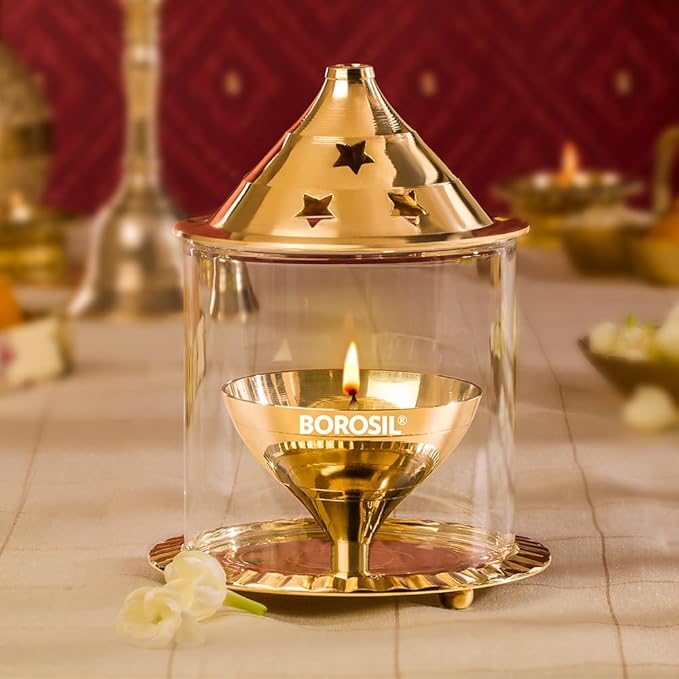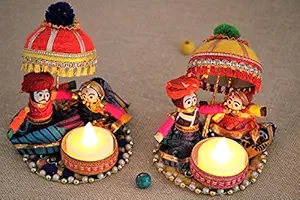હું તો ગઈ તી મેળે
મન મળી ગયું એની મેળે, મેળામાં
હૈયું હણાઈ ને ગયું તણાઈ
જોબનના રેલા માં, મેળામાં મેળામાં
મેળામાં આંખના ઉલાળા, મેળામાં ઝાંઝર ઝણકાર
કોઈને ના જાણે ક્યારે વાગે, કલજડે આંખિયુંનો બાણ
ચીતાડું ચગડોળ મારું આમતેમ ઝૂલતું ને
આંખ લડી જાય ઇશારા માં
હૈયું હણાઈ ને ગયું તણાઈ
જોબનના રેલા માં, મેળામાં મેળામાં
હું તો ગઈ તી મેળે
મન મળી ગયું એની મેળે, મેળામાં
Overview of "Hu Tau Gai Ti Mele"
Title & Meaning
'Hu Tau Gai Ti Mele' is a traditional Gujarati Garba song performed during Navratri, celebrating devotion, cultural heritage, and festive spirit.
Artist & Recording Details
This Garba is performed by folk artists across Gujarat, with both live and studio recordings preserving its authenticity.
Genre & Occasion
A devotional folk Garba, usually performed during Navratri to honor Goddess Amba and encourage communal celebration.
Language & Dialect
Lyrics are in Gujarati, reflecting regional dialects and festival expressions tied to Navratri traditions.
Popularity & Versions
Popular in villages and cities alike, with multiple live and recorded versions, making it a staple in Navratri festivities.
Lyrics Structure & Themes
Repetitive Chorus
Chorus lines are repeated to maintain rhythm and engage participants in group singing during circular Garba dances.
Imagery & Symbolism
Rich with imagery and symbolism, the lyrics depict colors, festivities, and cultural elements that highlight Gujarati traditions.
Community & Togetherness
Emphasizes collective celebration and unity, bringing together communities through music, dance, and devotion.
Emotional Resonance
Lyrics evoke joy, devotion, and excitement, creating a lively atmosphere during Navratri Garba nights.
Devotional Invocation
The song begins with prayers and invocations to Goddess Amba, setting a spiritual tone for the festival.
Musical & Performance Elements
Instrumentation & Rhythm
Traditional instruments like dhol, dholak, and manjira provide energetic beats, driving the rhythm for dancers.
Tempo & Dynamics
Begins at a moderate tempo and gradually intensifies, energizing dancers and maintaining the festive momentum.
Live vs Studio Renditions
Live Garba performances include audience interaction and extended verses, while studio versions are concise and polished.
Dance Cues & Movements
Lyrics guide dancers through spins, claps, and steps, enabling synchronized circular Garba formations.
Audience Participation
Encourages all participants to sing and dance along, making the Garba inclusive and enjoyable for everyone.
Festival & Cultural Significance
Navratri Connection
Integral to Navratri celebrations, boosting festival energy, devotion, and communal participation during Garba nights.
Spiritual Meaning
Reflects devotion and reverence for Goddess Amba, seeking blessings for protection, prosperity, and happiness.
Cultural Heritage
Preserves Gujarati folk traditions, ensuring Garba music and dance are passed down through generations.
Community Bonding
Strengthens social ties and promotes unity through shared music, dance, and festival rituals.
Joyful Celebration
Creates a vibrant and joyous atmosphere, enhancing the overall experience during Navratri Garba nights.
How to Use & Share
Translations & Transliteration
Provide translations and transliterations for non-Gujarati speakers to understand and connect with the song.
Audio / Video Embeds
Embed audio and video performances to engage users and provide a complete Navratri festival experience.
Printable Lyrics & PDFs
Offer downloadable and printable lyrics for practice, community events, or personal enjoyment.
Performance & Dance Tips
Provide dance steps, attire suggestions, and timing tips to help participants enjoy Garba fully.
SEO & Social Media
Optimize content with keywords like Hu Tau Gai Ti Mele, Gujarati Garba, Navratri Garba; add social sharing buttons for better traffic.
'Hu Tau Gai Ti Mele' is a traditional Gujarati Garba song performed during Navratri, celebrating devotion, cultural heritage, and festive spirit.
This Garba is performed by folk artists across Gujarat, with both live and studio recordings preserving its authenticity.
A devotional folk Garba, usually performed during Navratri to honor Goddess Amba and encourage communal celebration.
Lyrics are in Gujarati, reflecting regional dialects and festival expressions tied to Navratri traditions.
Popular in villages and cities alike, with multiple live and recorded versions, making it a staple in Navratri festivities.
Chorus lines are repeated to maintain rhythm and engage participants in group singing during circular Garba dances.
Rich with imagery and symbolism, the lyrics depict colors, festivities, and cultural elements that highlight Gujarati traditions.
Emphasizes collective celebration and unity, bringing together communities through music, dance, and devotion.
Lyrics evoke joy, devotion, and excitement, creating a lively atmosphere during Navratri Garba nights.
The song begins with prayers and invocations to Goddess Amba, setting a spiritual tone for the festival.
Traditional instruments like dhol, dholak, and manjira provide energetic beats, driving the rhythm for dancers.
Begins at a moderate tempo and gradually intensifies, energizing dancers and maintaining the festive momentum.
Live Garba performances include audience interaction and extended verses, while studio versions are concise and polished.
Lyrics guide dancers through spins, claps, and steps, enabling synchronized circular Garba formations.
Encourages all participants to sing and dance along, making the Garba inclusive and enjoyable for everyone.
Integral to Navratri celebrations, boosting festival energy, devotion, and communal participation during Garba nights.
Reflects devotion and reverence for Goddess Amba, seeking blessings for protection, prosperity, and happiness.
Preserves Gujarati folk traditions, ensuring Garba music and dance are passed down through generations.
Strengthens social ties and promotes unity through shared music, dance, and festival rituals.
Creates a vibrant and joyous atmosphere, enhancing the overall experience during Navratri Garba nights.
Provide translations and transliterations for non-Gujarati speakers to understand and connect with the song.
Embed audio and video performances to engage users and provide a complete Navratri festival experience.
Offer downloadable and printable lyrics for practice, community events, or personal enjoyment.
Provide dance steps, attire suggestions, and timing tips to help participants enjoy Garba fully.
Optimize content with keywords like Hu Tau Gai Ti Mele, Gujarati Garba, Navratri Garba; add social sharing buttons for better traffic.


